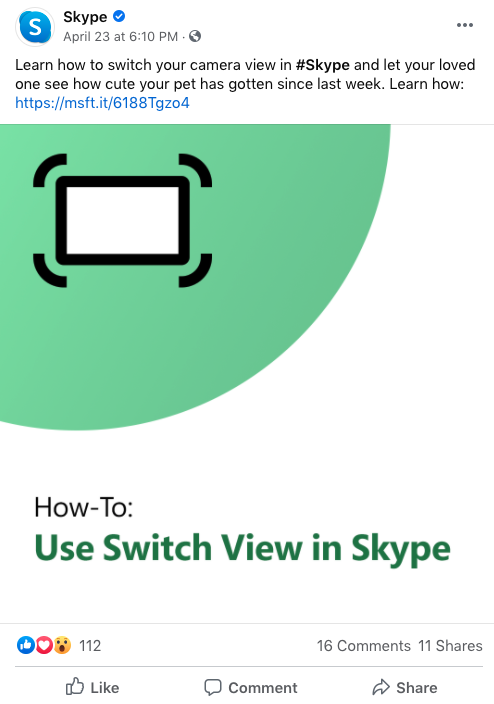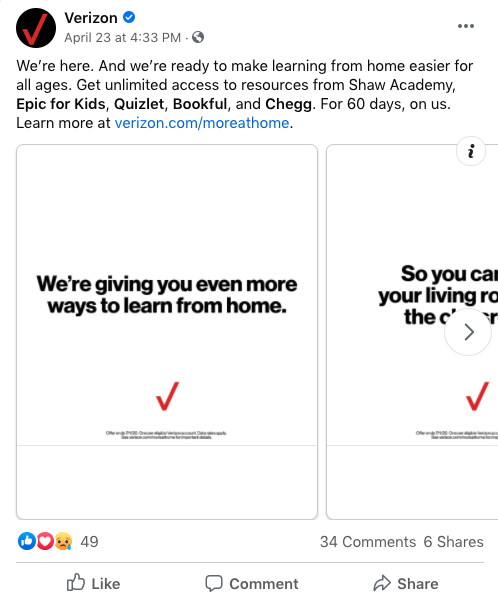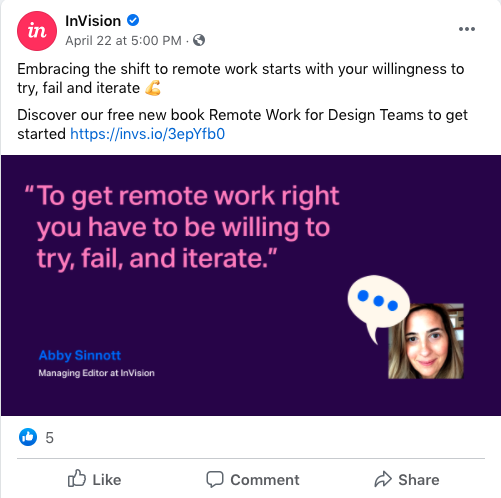Content Strategy
How to Tailor Content to Your Target Audience Using the Five Elements of Empathy
By Bernie Smigel on April 30, 2020
Empathy is an emotional connection: It's listening to a friend or family member and drawing on your own experiences to identify with them. It's talking to a distraught friend and sharing their pain or celebrating with them when they have good news. Emotional connections are also at the heart of effective, empathetic marketing.
Empathetic marketing understands the needs, frustrations, and motivations of its target audience. It speaks to these factors on a deep level through helpful, engaging, and entertaining content. In the coronavirus era, empathy has never been more critical for marketers. Your audience is undoubtedly wrestling with personal and professional conflicts and changes, and a content marketing campaign that ignores or exploits this situation will likely be seen as inappropriate and insensitive. So how can your marketing approach empathize with audiences while still driving key business objectives?
For starters, consider the five key elements of empathy identified by psychologist and author Daniel Goleman: understanding others, developing others, having a service orientation, leveraging diversity, and political awareness. Applying his research and insights can help you forge deeper connections with your audience through content. Additionally, looking at these examples of how other brands are successfully executing empathetic marketing can help you enhance the accuracy and effectiveness of your own efforts.
1. Understanding Others: Strive to be Relatable
Goleman's first element involves gaining an authentic understanding of a person's feelings and perspective. Though you aren't literally in the shoes of your audience, you can work to understand their frustrations. This is where research comes in—and that means listening.
Beyond looking at data for how COVID-19 is affecting user behavior, consider what you already know about your target audience: Are they likely to be working from home right now? If so, how might they be spending their free time? And is your buyer persona likely to have kids? If yes, they may have their hands full with stay-at-home parenting responsibilities. Thinking about the timely needs and challenges of your audience allows you to craft content that's more understanding and, in turn, more empathetic.
Who's doing it right? During the COVID-19 pandemic, video communication platforms have proven incredibly helpful in keeping friends, family, and colleagues connected. But Skype doesn't just understand the newfound significance of video conferencing platforms, it's also attuned to the popular culture surrounding it. In this Facebook post, with a simple reference to the furry friends who've been sharing our screen time, Skype brings levity and relatability to its followers' feeds.
Photo attribution: Skype on Facebook.
2. Developing Others: Create Brand Philanthropy
After understanding how someone feels, you can help them by acting on their needs. But what does this mean for a content marketer helping their target audience? In short, it entails going the extra mile.
Provide support to your audience in any way you can. Consider how you can help members of your audience who are facing a daunting challenge. If you're a financial institution, you could create content providing tips for how they can stretch their stimulus check further. If you're a nonprofit, you could run a social campaign encouraging others to give back to those in need. If you go this route, ensure you're both sharing steps for how people can get involved and highlighting the generous actions you and your followers make.
It's always in your brand's best interests to lend a helping hand. Your followers are likely to remember how your brand stepped up, no matter how big or small your efforts, and reward you with their loyalty, positive word of mouth, and, ideally, their future business.
Who's doing it right? School closures across the United States have created a heightened need for companies to support remote learning. Verizon found an opportunity to offer support to teachers and employees in the education industry. Even the simple touch of beginning this post with, "We're here," gives its offer a more empathetic touch.
Photo attribution: Verizon on Facebook.
3. Having a Service Orientation: Provide the Right Content
Having a service orientation means taking a selfless approach. For marketers, that requires being less fixated on driving conversions and more concentrated on serving audiences with helpful content. In doing so, you're tending to the brand awareness and advocacy stages of the marketing funnel. An organization that proves it's aware of customers' specific needs has a much better shot at inspiring brand loyalty and advocacy down the line.
Who's doing it right? Digital product design platform InVision knows that virtually all of its customers have made a sudden jump to working in remote teams. It reacted by publishing a free e-book on remote collaboration for product designers, which shares helpful tips and speaks directly to the immediate needs of its customer base.
Photo attribution: InVision on Facebook.
4. Leveraging Diversity: Invite Others to Join the Discussion
Empathetic marketing doesn't just speak to a wide range of people, it also acknowledges the wide range of perspectives they have. For marketers, this means steering clear of assumptions and, instead, seeking to understand what audiences are thinking, feeling, and facing, and how it will affect their actions.
When you know how your customers may behave in different emotional states, it allows you to craft more diverse and all-encompassing brand messaging. Additionally, you can develop this understanding further by inviting your audience to engage with your brand. Through these friendly discussions, you can gain key insights into their perspectives and preferences.
Who's doing it right? Financial management and human resource software vendor Workday recognizes the array of viewpoints that come from the variety of industries using its platform. It's been engaging its audience through blog posts that share its customers' greatest lessons and by inviting its social media followers to share stories of their own.
Photo attribution: Workday on Facebook.
5. Political Awareness: Tailor Messages to Your Audiences' Feelings
Goleman's fifth element of empathy, political awareness, requires sensing and responding to emotional undercurrents within a collective group. Content marketers are the bridge between a brand and its audience, and their fingers need to be on the pulse of what their followers are feeling.
Being aware of how your audience is feeling as a whole may be difficult, but you should invest time in crafting content that speaks to most of your audience's current needs and states of mind. Without due diligence in this department, you risk putting forth a brand tone that feels out of touch or, worse, unempathetic.
Who's doing it right? Some brands are managing to brighten their audiences' days with short, text-only social media posts—breaking the normally absolute rule of always posting with a visual element. Slack, the company that provides an ever-popular team collaboration tool, has mastered the art of delighting followers who may be particularly stressed amid the COVID-19 pandemic.
Photo attribution: Slack on Facebook.
Though you should always be practicing empathetic marketing to achieve deeper audience connections, it's now more crucial than ever. Take extra time to review your content before hitting publish and always be mindful of what your audience may be going through. Remember, there's another human on the other end of that screen, after all, so speak to them and your content will be stronger and more valuable for it.
For more stories like this, subscribe to the Content Standard newsletter.
Featured photo by Engin Akyurt on Pexels.






